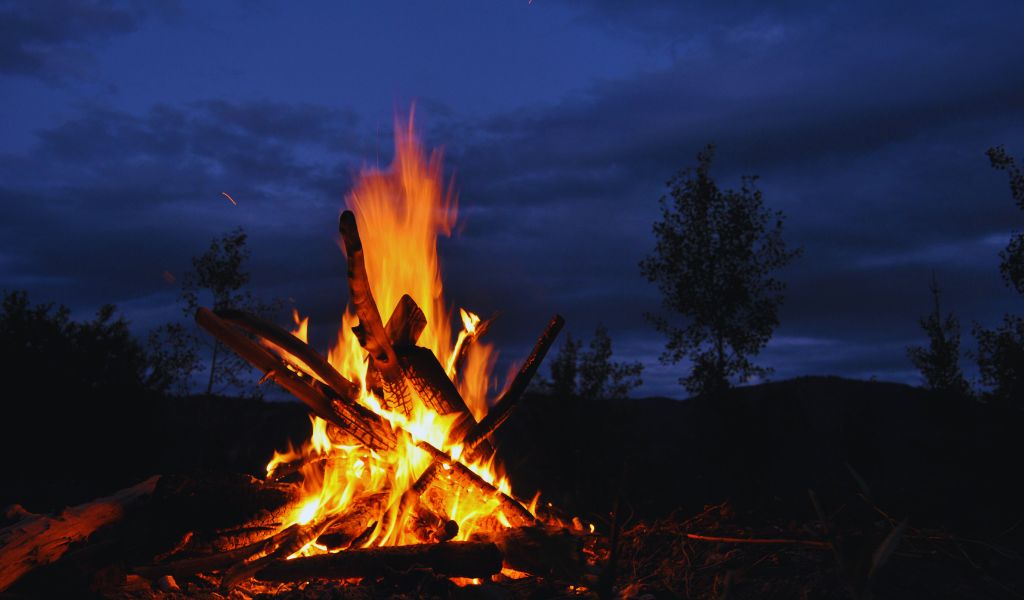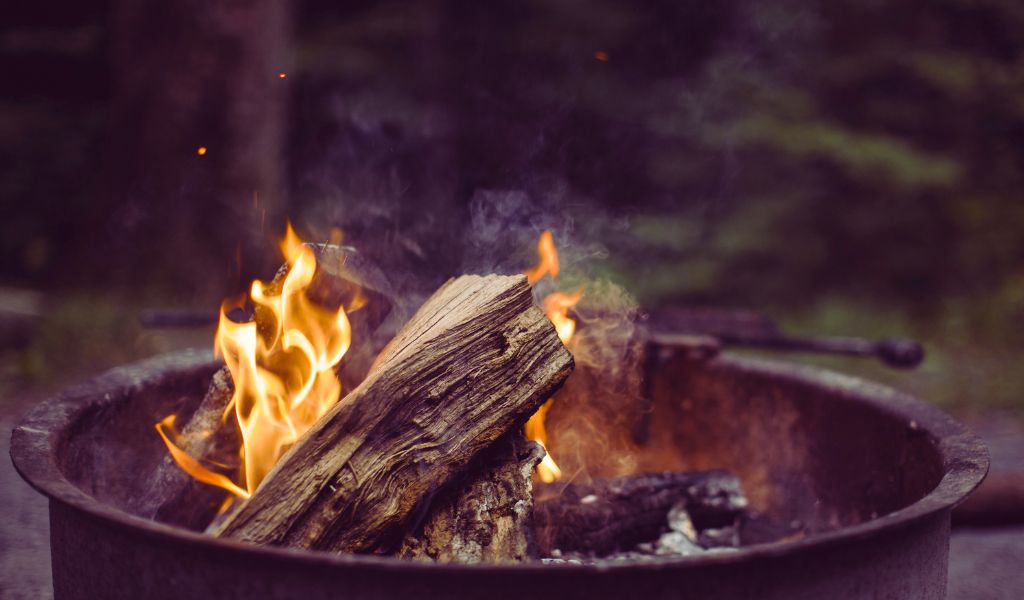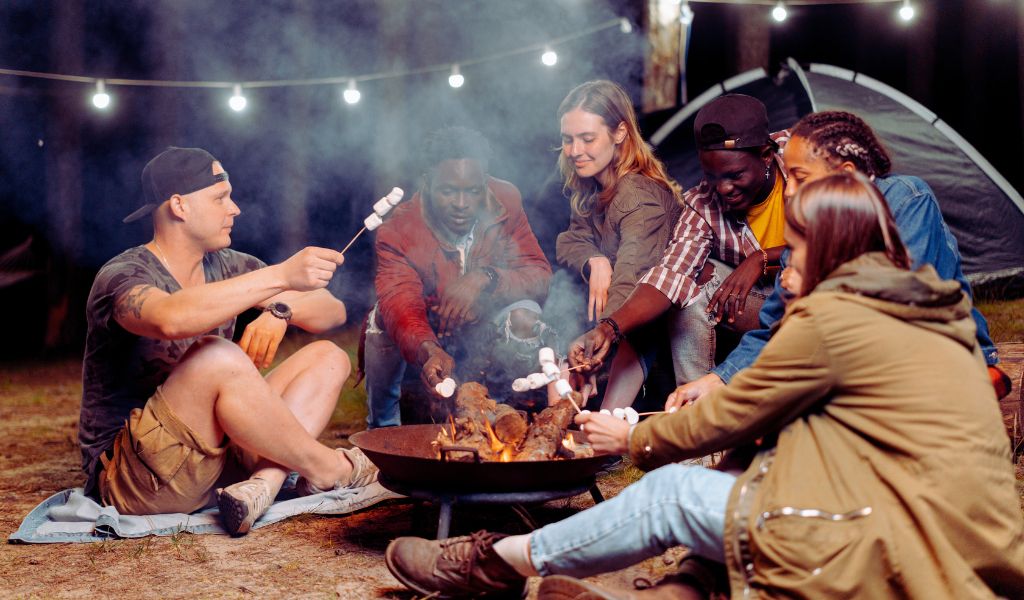Building a campfire is a quintessential part of any camping experience, offering warmth, light, and a unique ambiance that connects us to the great outdoors.
However, ensuring your campfire is both safe and legal is paramount to preserving nature and respecting the laws designed to protect us and the environment.
This guide will take you through every step of the process, from understanding regulations to leaving no trace, ensuring your campfire is a source of joy and not a cause for concern.
Table of Contents
Campfires
There’s something magical about gathering around a campfire, sharing stories, and enjoying the warmth of the flames under a starlit sky.
However, this idyllic scenario comes with responsibilities.
Building a campfire safely and legally is essential to prevent forest fires, protect wildlife habitats, and ensure that the great outdoors can be enjoyed by generations to come.
This article is your comprehensive guide to doing just that, with every step designed to enhance your experience while minimizing your environmental footprint.

Understanding Campfire Regulations
Before you even gather your first twig, it’s crucial to familiarize yourself with the campfire regulations specific to your location.
These can vary widely depending on the area, the season, and the current fire danger level.
National parks, for example, may have different rules than state parks or private campgrounds.
- Federal vs. Local Regulations: Federal lands often have overarching guidelines that are then adapted by local authorities based on specific conditions and risks. Always check with the local forest service or park office for the most current information.
- Seasonal Fire Bans and Restrictions: Be aware of seasonal changes and current weather conditions that may affect fire safety rules. During dry spells or high wind periods, campfires might be completely banned to prevent wildfires.
Choosing the Right Location
Selecting an appropriate location for your campfire is not just about convenience or aesthetics; it’s about safety and legality.
- Distance from Structures: Ensure your campfire is built well away from tents, overhanging branches, and any flammable materials. A good rule of thumb is to keep the fire at least 15 feet away from tent walls and other structures.
- Ground and Overhead Safety: Choose a spot that’s protected from wind gusts and has a non-flammable surface. Bare soil is best. Avoid areas with heavy leaf litter, grass, or pine needles.

Preparing for Your Campfire
Preparation is key to a safe and legal campfire. This means not only gathering the right materials but doing so in a way that respects the environment.
- Gathering Materials Legally: Collecting firewood from around your campsite is often prohibited. Plan ahead by bringing your own firewood or purchasing it locally. This also helps prevent the spread of invasive species.
- Environmental Considerations: Use existing fire rings where available to minimize the impact on the site. If you must create a new fire spot, clear a space to the bare soil and encircle it with rocks to contain the fire.
Building Your Campfire
The structure of your campfire can influence its safety, efficiency, and environmental impact.
- Safe Construction Techniques: The teepee, log cabin, and lean-to are popular methods that allow air to flow, facilitating a controlled burn. Start small and only add wood as necessary to keep the fire manageable.
- Types of Campfire Structures: Each structure has its benefits, whether it’s the teepee’s ease of lighting or the log cabin’s stability and long burn time. Choose based on your needs and conditions.
Lighting Your Campfire Safely
The moment has come to light your campfire, but doing so safely is crucial.
- Matches and Lighters: Always use waterproof matches or a windproof lighter to ensure you can light the fire reliably.
- Natural Fire Starters: Consider natural alternatives like dry leaves, bark, or small twigs as starters. Avoid using any chemicals or accelerants that can leave harmful residues.
Managing Your Campfire
Once your campfire is burning, managing it properly ensures it remains a source of pleasure rather than danger.
- Keeping the Fire Under Control: Never leave your campfire unattended, and keep water or a shovel nearby to manage unexpected flare-ups.
- Adjusting for Wind and Weather: Be prepared to extinguish your fire if the wind picks up or if the weather changes. Safety always comes first.
How do I build a campfire safely and legally?
Building a campfire safely and legally is a straightforward process when you follow the right steps.
This guide has provided a step-by-step approach, from selecting the right location and preparing appropriately to lighting and managing your fire responsibly.
Always prioritize safety, follow local regulations, and be prepared to extinguish your fire if conditions change.
Extinguishing Your Campfire Properly
Extinguishing your campfire thoroughly is non-negotiable.
- The Soak, Stir, and Feel Method: Douse your fire with water, stir the ashes to expose any hidden embers, and then touch the area to ensure it’s completely cool. Repeat until you’re confident the fire is out.
Leaving No Trace
The principle of leaving no trace ensures that natural spaces are preserved for everyone to enjoy.
- Cleaning Up Your Campfire Site: Before you leave, ensure your campfire site is clean, removing any trash or leftover food. Scatter cooled ashes over a broad area away from the campsite.
- Restoring the Natural Area: If you created a new fire spot, dismantle any structures you built and scatter the rocks to return the area as closely as possible to its natural state.

Legal Consequences of Irresponsible Campfires
Failing to adhere to safe and legal campfire practices can have serious consequences, including fines, legal penalties, and the potential for causing widespread environmental damage.
Always err on the side of caution and responsibility.
Campfire Safety Tips
- Personal Safety: Keep a safe distance from the fire, especially when wearing synthetic fabrics that can melt or ignite easily.
- Protecting Wildlife and Nature: Remember that your campfire can affect local wildlife. Keep it small to minimize its impact.
Building a campfire safely and legally is an essential skill for any outdoor enthusiast.
By following the guidelines outlined in this article, you can ensure that your campfire is a source of enjoyment and not a hazard.
Always remember to check local regulations, prepare thoroughly, manage your fire responsibly, and leave no trace of your presence. Happy camping!



